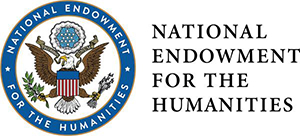
The move from Austin to Denver
The WS Ranch collection move was an effort four years in the making. Preliminary inventories were made in 2017 and 2019, with an estimated 890 boxes and 80 loose groundstone. The move was originally scheduled for 2020 but was delayed by the COVID-19 pandemic. Fortunately, the 45 ancestors and 30 associated funerary objects were successfully repatriated and reburied in July 2021 in a joint ceremony with the US Forest Service and representatives from the Acoma and Zuni. Tentative plans were made to move the collection in fall 2021.
When DMNS received an NEH grant in August 2021 to process and rehouse the WS Ranch collection, plans were finalized to move the collection from Austin to Denver in September. The collection was stored at the University of Texas-Austin in two warehouses at the Texas Archaeological Research Center. Most of the collection was still housed in the original, brown-paper excavation bags and cardboard boxes, which had suffered from deterioration over time. The largely-open design and lack of environmental control in the two buildings where the collection was stored meant that pests, dust, dirt, light, and other pollutants had landed on the artifacts for decades. The highly variable climatic conditions of Austin, Texas, resulted in fluctuations and extremes in temperature and humidity.
In September 2021, a team of four collections staff from DMNS traveled to Austin for two weeks to pack the collection, with packing supplies shipped ahead of time the week before. Over the course of six days, working in the warehouse in temperatures as high as 90 degrees F, DMNS staff prebuilt boxes, transferred bags and vials to the new boxes, labeled and weighed each box, staged the boxes in stacks, and then loaded them onto pallets. Custom boxes were built for large groundstone and whole ceramics. With a larger box size chosen for packing, the estimated 1000 boxes were condensed down to 560. The pallets were then loaded into a -20 degrees C freezer for two weeks to kill any potential pest infestations. Finally, the collection was loaded onto two dedicated trucks direct to Denver and arrived on October 11, 2021. It is now in the 2nd floor SE collections space to be processed and cataloged over the next two years. Stay tuned for updates!
Caring for the Collection
Half a million artifacts from the ancestral site of WS Ranch were recently acquired by DMNS. The artifacts have languished in Texas, in their original field packaging for 40 years. Our job was adopt, clean ‘em up, and make them organized and ready for research and interpretation.
The first step (after freezing and debugging), was to deal with their original field packaging. This included torn and soiled brown paper bags, plastic vials, and plastic sandwich bags. These materials are not ideal for long term preservation and our next BIG initiative is to rehouse these objects in museum quality casing. This means different for different objects appropriate for pottery, stone tools, groundstone, animal bones, shell artifacts, soil samples, or ancient plants parts like pollen and seeds. Each type of object has different storage needs. Pottery sherds can be stored in food grade plastic bags, but delicate pieces of shell need glass vials to protect them. Large objects like groundstone (manos and metates) need custom housing built called “mounts” that are tailored to fit like a glove.
We’ve already repatriated (returned to their descendent communities who elected to rebury) 45 ancestors and 30 associated burial objects from the WS Ranch Site. NAGPRA (The Native American Graves Protection and Repatriation Act) (possibly provide a link here) work continues under the direction of Elizabeth Kriebel and her team to identify additional remains that were scattered across the site by natural and human processes and were not initially identified with a burial. These too will be separated, repatriated and reburied with the other ancestors who lived at WS Ranch.
After each object is rehoused, its information is recorded in our database for researchers and tribal members to access. All of this work takes a village: a huge team of volunteers and interns are diligently working to rehouse, enter data, build mounts, problem solve, and care for this important and long neglected collection. As of December 2022, the team has rehoused and databased approximately 84,000 individual objects, and we look forward to what the new year has in store. Watch this space and our DMNS social media accounts for more updates coming soon!





















